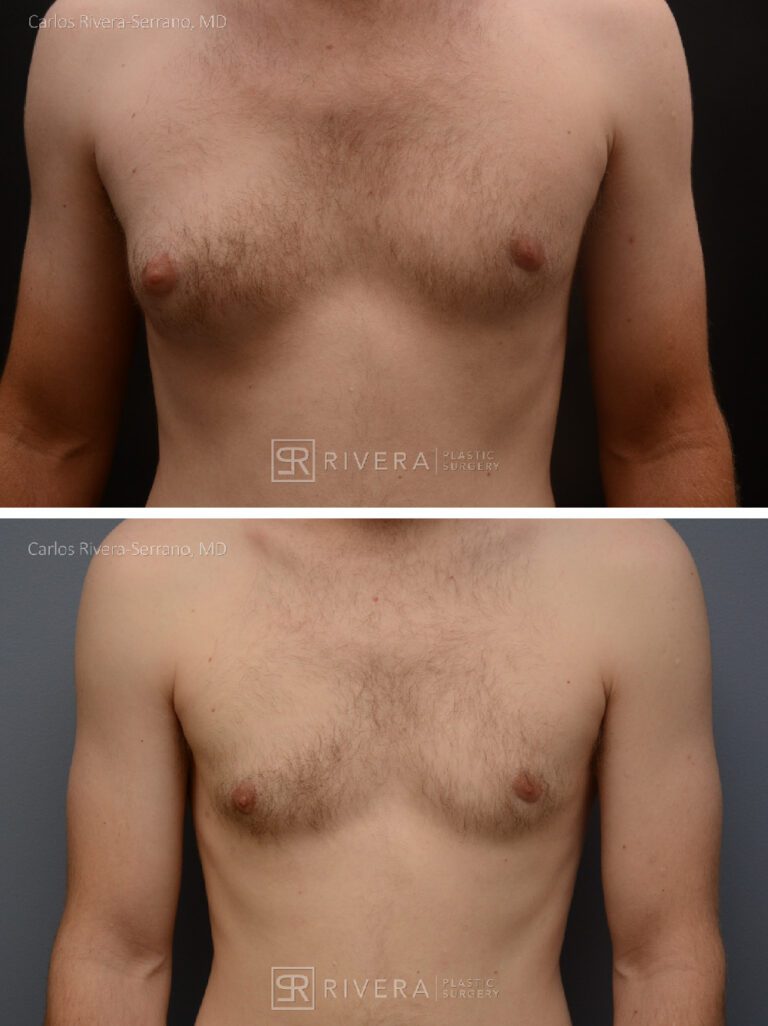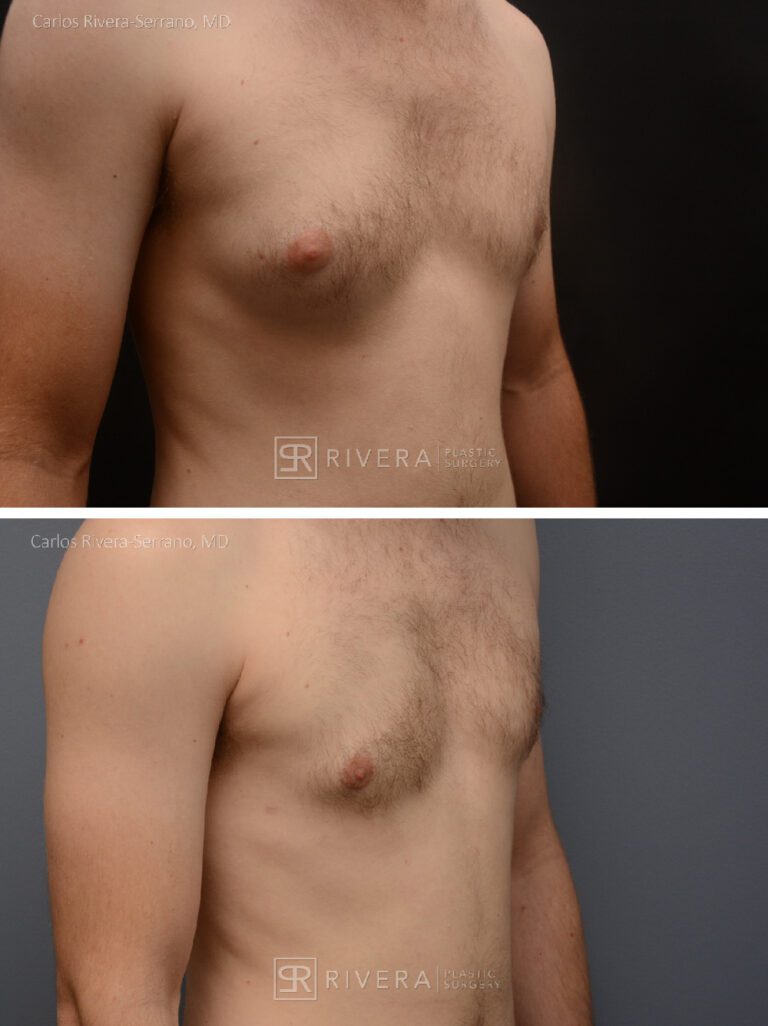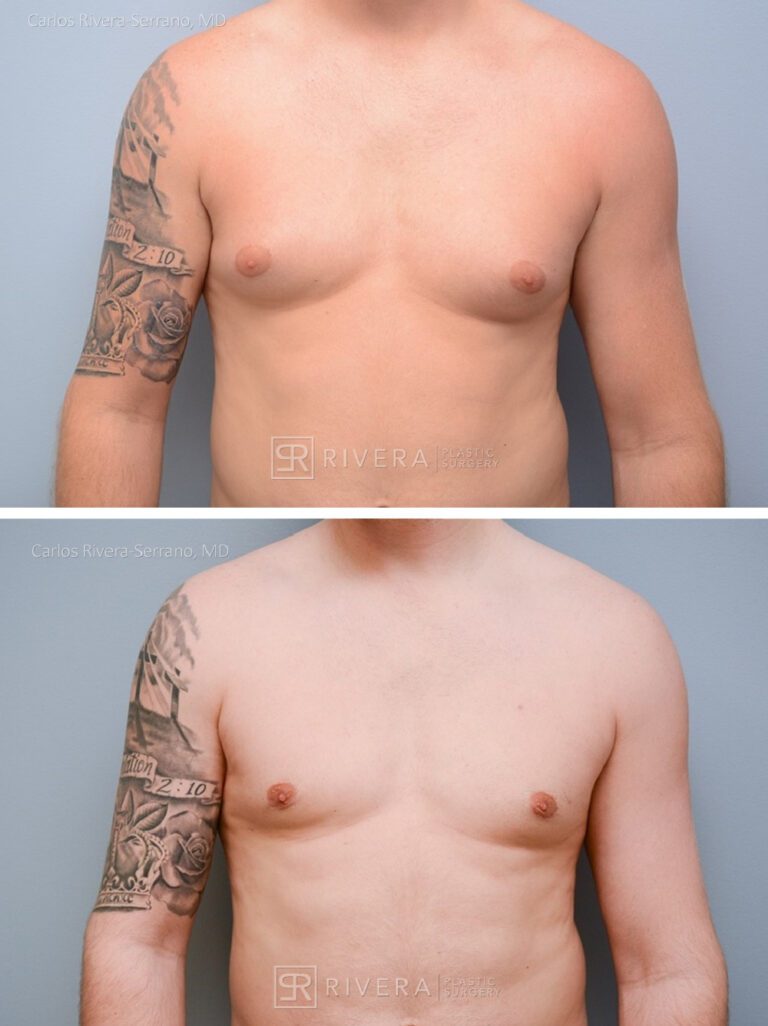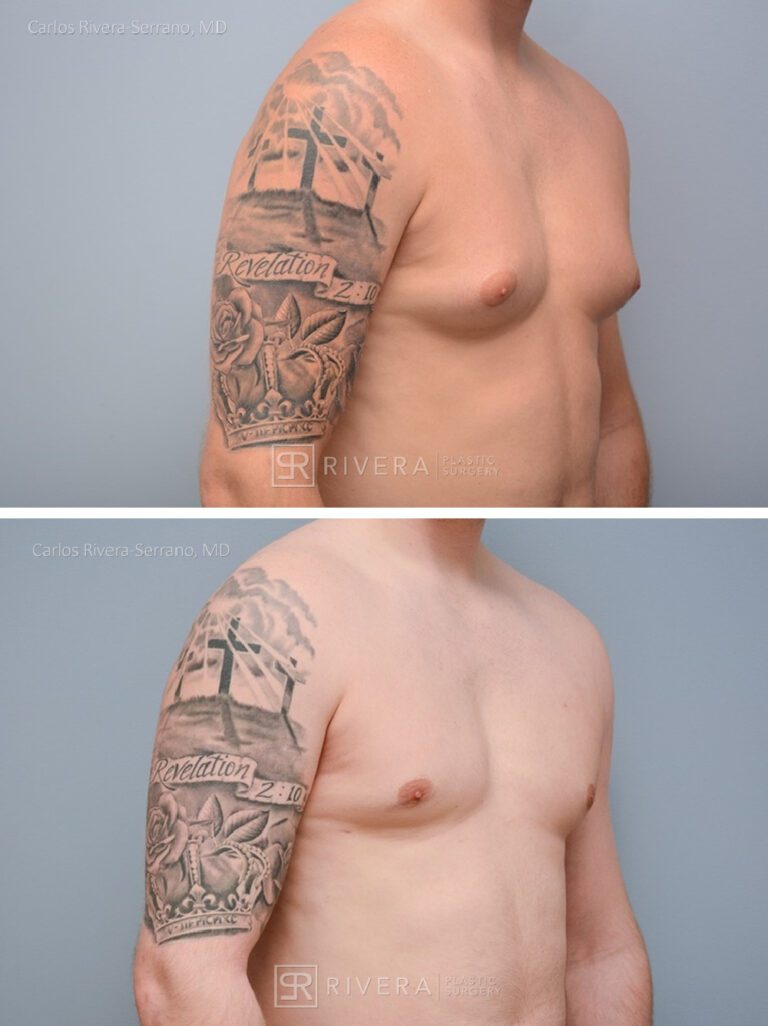What is Gynecomastia Surgery?
Gynecomastia surgery is performed to eliminate unwanted and excess male breast tissue to create a more masculine silhouette. Multiple factors, including genetics, weight gain, and hormone imbalance, can cause this excess tissue. In brief, both males and females technically have breasts, including a breast gland. The difference is not in the type of tissue but in the quantity. Males with gynecomastia commonly have an excess of both, typically one more than the other. Therefore, in gynecomastia surgery, both of those tissues +/- skin (if needed) need to be addressed. Based on the above, you can understand why this operation must be tailored to the patient and is not one-size-fits-all.
Dr. Rivera-Serrano uses two types of approaches. The first one is for patients with small chests, in whom solely liposuction and removal of the glandular tissue via a small, well-hidden incision beneath the areola is sufficient. The second group of patients are those with a clear excess of skin, where skin removal is mandatory for an adequate result and often needs free nipple grafting. This means that the nipples and areolas are completely detached and then inset as a graft (patch). Due to the skin removal, patients will have longer and more visible scars along the inferior aspect of the chest, which can be quite prominent initially but tend to mature and look better over time.
Many patients fall in the grey zone between both categories. Sometimes, the first approach is tried in these patients, and then the skin is left to contract and re-drape. No more is done if the result is satisfactory after about six months. However, if excess skin is still present, a second skin excisional procedure may be carried out. A personal consultation will determine what is best for you.









